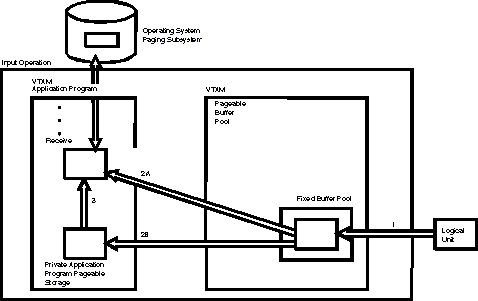 z/OS Communications Server: SNA Network Implementation Guide
z/OS Communications Server: SNA Network Implementation Guide
 z/OS Communications Server: SNA Network Implementation Guide
z/OS Communications Server: SNA Network Implementation Guide
|
Previous topic |
Next topic |
Contents |
Contact z/OS |
Library |
PDF
I/O buffers and application program data transfer z/OS Communications Server: SNA Network Implementation Guide SC27-3672-01 |
|
|
Data that is transferred between a VTAM® application program and another logical unit in the network passes through VTAM I/O buffers. VTAM temporarily holds the data until an application program requests it or until it can be sent to a logical unit. Figure 1 shows how VTAM uses buffers for input operations. Figure 1. How VTAM uses input buffers

In general, an application program should be written so that at least one request for input is always outstanding. This reduces the chance of VTAM using excessive amounts of an application program's dataspace storage. Figure 2 shows how VTAM uses buffers for output operations. Figure 2. How VTAM uses output buffers.

If you notice that your I/O buffers have expanded and you are running out of CSA, it is possible that an application program is not pacing data. Investigate the application programs that have a lot of traffic moving through the I/O buffers to determine whether pacing is being performed. For general information about pacing, see Session-level pacing. For specific information about application program pacing, see Application program pacing. 


|
 Copyright IBM Corporation 1990, 2014 Copyright IBM Corporation 1990, 2014 |